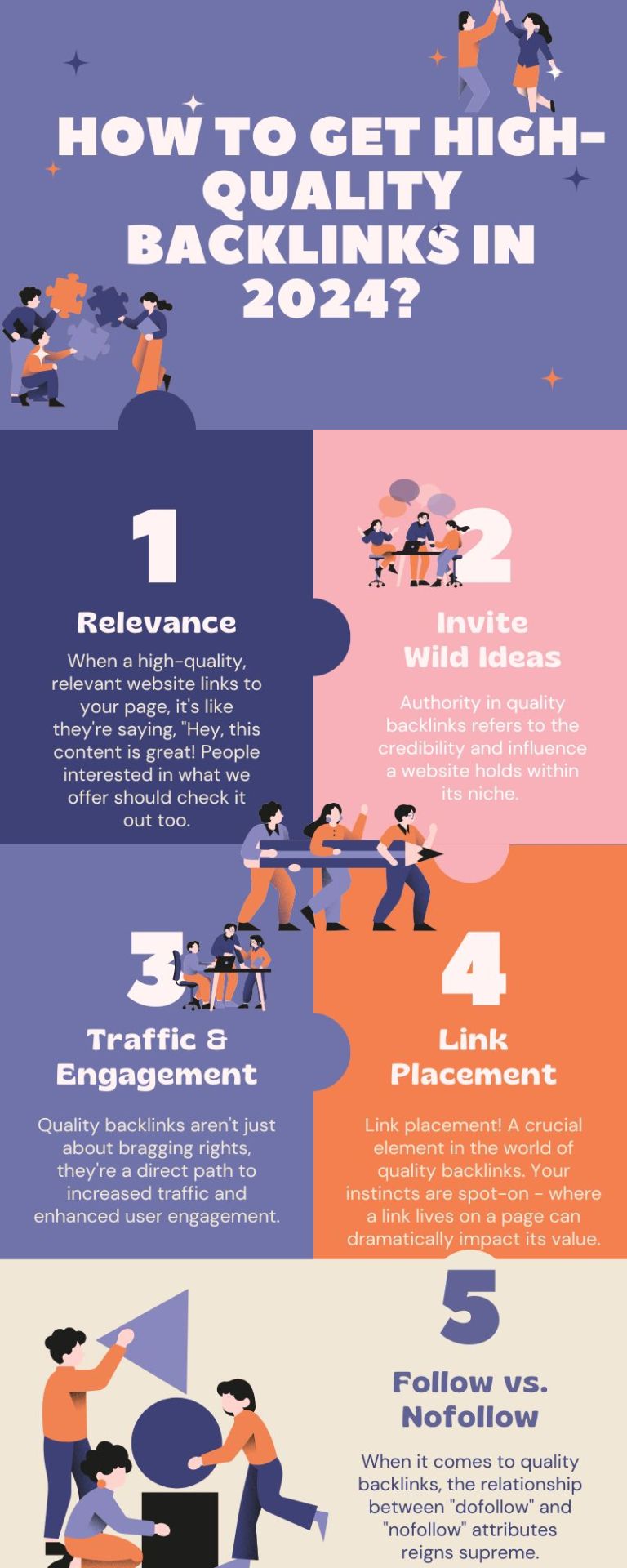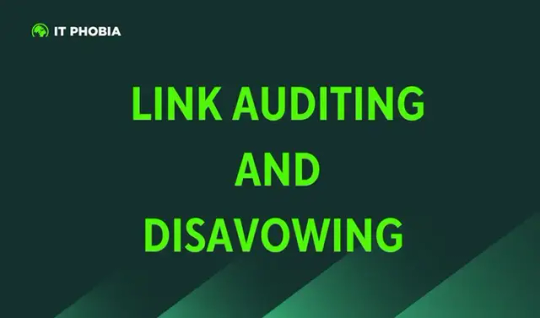#what is a backlink
Text
What is a backlink?
The backlink, also known as an “inbound link” or “external link”, refers to a hyperlink placed on a page of an external website pointing to a page on your website. Concretely, this means that a web page has a clickable link that takes Internet users directly to your site.
You may also hear of “new linking” which is the technical word for a strategy for creating inbound links to a site.
The opposite of “inbound link” is “outbound link”. It is an external link that is positioned on your site and that directs the user to another website.
What is a backlink?
The links between the pages of your site are internal links. Thanks to them, you allow the user to consult a page on a specific subject without leaving your site. The creation of links between your pages is called internal linking.
Internal links are used to facilitate navigation on your site and the indexing of pages by Google robots while backlinks are used to:
– Indicate the external location of a piece of information to a user
– Transmit the popularity of one website to another
How to optimize the dofollow backlinks of your site by Seachbooster
0 notes
Text
On Page SEO vs Off Page SEO: Which One Helps You Rank Better?
As a website owner or digital marketer, you may have heard the terms ‘on page SEO’ and ‘off page SEO’ thrown around and wondered what they truly mean. Understanding the difference between the two is crucial if you want to improve your search engine rankings and drive organic traffic to your website. In this article, we’ll explore the differences between on page SEO and off page SEO, discuss their…
View On WordPress
#benefits of off page seo#benefits of on page seo#benefits of seo#difference between on page seo and off page seo#difference of on page seo and off page seo#high quality backlinks#importance of on page seo#importance of seo#keyword ranking#on page seo vs off page seo#search engine optimization#SEO#seo keyword ranking#what is off page seo#what is on page seo
4 notes
·
View notes
Text
#INTERNET SPEED TEST#WHAT IS MY IP#GOOGLE SERP CHECKER#YOUTUBE THUMBNAIL DOWNLOAD#POOR BACKLINK CHECK#LINK ANALYSIS TOOL#speed test#toolshubnew#tools#free tools
2 notes
·
View notes
Text

Well THIS is the shadiest thing ive seen in a while.
2 notes
·
View notes
Text
Cyber Threat Intelligence - Driveittech

Cyber Threat Intelligence solutions gather raw data about emerging or existing threat actors and threats from a number of sources.
This data is then analyzed and filtered to produce threat intel feeds and management reports that contain information that can be used by automated security control solutions.
The primary purpose of this type of security is to keep organizations informed of the risks of advanced persistent threats, zero-day threats and exploits, and how to protect against them.
2 notes
·
View notes
Text
Understanding Backlink Profiles: Differentiating Referring Domains vs. Backlinks
In the world of search engine optimization (SEO), building a strong backlink profile is essential for improving your website’s authority and ranking higher in search engine results. But what exactly is a backlink profile, and how do referring domains and backlinks contribute to it? Let’s explore these concepts in detail.
Referring Domains vs. Backlinks
Referring Domains: Referring domains refer to the unique websites that link back to your website. Each referring domain represents a separate entity that has decided to include a link to your site within its content. For example, if a blog post on a reputable industry website includes a link to your HVAC company’s website, that website is considered a referring domain.
Backlinks: Backlinks, also known as inbound links or incoming links, are the actual hyperlinks that direct users from one website to another. Each backlink represents a specific instance where another website has linked to your site. Backlinks are the building blocks of your backlink profile and play a crucial role in determining your website’s authority and credibility in the eyes of search engines.
Undrstanding the Relationship: Referring domains vs backlinks are closely related but represent different aspects of your backlink profile. While referring domains focus on the unique websites linking to your site, backlinks provide insight into the individual links themselves. A single referring domain can contain multiple backlinks, each contributing to the overall strength of your backlink profile.
For example, if a popular industry publication includes three separate links to different pages on your website within a single article, it would count as one referring domain with three backlinks. Conversely, if three different websites each include one link to your website, it would count as three referring domains with three backlinks in total.
Why It Matters:
Building a diverse and high-quality backlink profile is crucial for improving your website’s search engine rankings and organic traffic. Search engines like Google consider backlinks from reputable and relevant websites as a vote of confidence in your content’s quality and authority. A robust backlink profile with a healthy mix of referring domains and backlinks can help boost your website’s credibility and visibility in search results.
In summary, your backlink profile is a vital component of your SEO strategy, comprising both referring domains and backlinks. By focusing on acquiring high-quality backlinks from diverse referring domains, you can strengthen your website’s authority and improve its performance in search engine rankings.
0 notes
Text
What are Backlinks?
Backlinks serve as pathways that lead users from one webpage to another. When one website links to another, it indicates to search engines that the linked content is valuable, trustworthy, or relevant. Essentially, backlinks act as votes of confidence from one site to another.
Search engines like Google consider backlinks as one of the key factors when determining a website’s authority and relevance for specific search queries. Websites with a higher number of quality backlinks tend to rank better in search results, attracting more organic traffic.
Read our full Article - https://powerofbacklinksindigitalmarketing.blogspot.com/
#Harnessing the Power of Backlinks in Digital Marketing#Power of Backlinks in Digital Marketing#Backlinks#link building#off page seo#digital marketing#what are backlinks#types of backlinks
1 note
·
View note
Text

Elevate Your SEO Game: The Ultimate Guide to Website Analysis
Uncover the secret to skyrocketing your website's success with the ultimate guide to SEO analysis tools! 💡
Discover the power of SEO analysis tools and take your website to new heights with expert insights and comprehensive comparisons. Whether you're a beginner or a seasoned pro, this guide has everything you need to optimize your online presence and drive organic traffic.
1) Boost your website's SEO 🚀
2) Analyze keywords 📊
3) Improve backlinks 🔗
4) Track rankings 📈
5) Drive organic traffic 🌐
Read Full Article:
Link to the Software:
Earn Money Online:
Visit the website: https://zentechia.blogspot.com/ ( This website is related to Affiliate Marketing, Blogging, Online Earning, and the latest technology )
OUR LATEST BLOGS:
Marketing with Instagram in 2024 | Algorithm Revealed
Affiliate Marketing as a Career in 2024:
Facebook Marketing Trends 2024: What You Need to Know:
Top 10 Side Hustles in 2024 to Make $5000 per month:
#SEO #WebsiteAnalysis #DigitalMarketing #OnlineVisibility #SEOTools #SearchEngineOptimization #MarketingStrategy #ContentStrategy #WebTraffic #SEOExpert #SEM #Ahrefs #Moz #GoogleSearchConsole #KeywordResearch #BacklinkAnalysis #SiteAudit #CompetitorAnalysis #RankTracking #ContentMarketing #OnlinePresence #SERP #OrganicTraffic #SearchEngineRankings #SEOAnalysis
#Elevate Your SEO Game: The Ultimate Guide to Website Analysis#Uncover the secret to skyrocketing your website's success with the ultimate guide to SEO analysis tools! 💡#Discover the power of SEO analysis tools and take your website to new heights with expert insights and comprehensive comparisons. Whether y#this guide has everything you need to optimize your online presence and drive organic traffic.#1) Boost your website's SEO 🚀#2) Analyze keywords 📊#3) Improve backlinks 🔗#4) Track rankings 📈#5) Drive organic traffic 🌐#Read Full Article: https://shorturl.at/lsJP8#Link to the Software: https://zentechia.blogspot.com/#Earn Money Online: https://shorturl.at/cdinu#Visit the website: https://zentechia.blogspot.com/ ( This website is related to Affiliate Marketing#Blogging#Online Earning#and the latest technology )#OUR LATEST BLOGS:#Marketing with Instagram in 2024 | Algorithm Revealed#https://rb.gy/z3dpvl#Affiliate Marketing as a Career in 2024:#https://rb.gy/7qyuok#Facebook Marketing Trends 2024: What You Need to Know:#https://rb.gy/eisuz6#Top 10 Side Hustles in 2024 to Make $5000 per month:#https://rb.gy/91tims#SEO#WebsiteAnalysis#DigitalMarketing#OnlineVisibility#SEOTools
0 notes
Text
Exploring the Benefits of Blog Commenting
Blog commenting is a form of engagement where users interact with a blog post by leaving feedback, questions, or opinions in the comments section below the post. It serves as a platform for discussion, allowing readers to express their thoughts, provide additional insights, or ask for clarification from the author or other commenters. Blog commenting also helps build community around the blog, fostering connections between readers and the author, and potentially generating valuable insights and feedback for both parties.
#blog commenting#blog commenting tutorial#blog commenting sites#how to do blog commenting#blog commenting in seo#blog commenting backlinks#what is blog commenting in seo#blog commenting seo#what is blog commenting#blog commenting for seo#seo blog commenting#blog commenting tips#commenting#how to find blog commenting sites in hindi#blog commenting in hindi#blog commenting sites list#blog commenting is good for seo#commenting sites list
0 notes
Text
Leveraging Blog Commenting for Success
In the expansive realm of digital communication, where blogs serve as platforms for ideas, discussions, and interactions, blog commenting stands as a vital yet often overlooked component. While the act of leaving comments on blog posts may seem trivial to some, it carries significant weight in fostering engagement, building communities, and amplifying voices across the web.
At its core, blog commenting represents an avenue for individuals to express their thoughts, share insights, and engage in conversations sparked by the content presented. It transcends the role of a mere spectator, transforming readers into active participants in the discourse. By offering perspectives, asking questions, or providing feedback, commenters contribute to the richness and diversity of conversations surrounding a particular topic.
Beyond individual expression, blog commenting serves as a catalyst for community building within digital spaces. Through the exchange of ideas and interactions among commenters, a sense of camaraderie and connection emerges, creating virtual communities centered around shared interests or passions. These communities serve as hubs for knowledge sharing, support networks, and sources of inspiration, fostering a sense of belonging in an otherwise vast and impersonal digital landscape.
Furthermore, blog commenting plays a crucial role in amplifying voices and perspectives that may otherwise go unheard. In an era where algorithms often dictate visibility and attention, leaving thoughtful comments allows individuals to carve out their digital footprint and engage with audiences beyond their immediate circles. It provides a platform for marginalized voices, emerging creators, and underrepresented communities to share their experiences, challenge dominant narratives, and spark meaningful discussions on issues that matter.
From a practical standpoint, blog commenting offers several tangible benefits for both commenters and blog owners alike. For commenters, it serves as a means of networking, establishing connections with like-minded individuals, industry peers, or potential collaborators. Engaging in meaningful conversations within comment sections can lead to opportunities for professional growth, partnerships, or even new friendships forged in the digital sphere.
For blog owners, comments serve as valuable feedback mechanisms, offering insights into the reception of their content, understanding audience preferences, and identifying areas for improvement. Furthermore, active comment sections contribute to the overall engagement metrics of a blog, signaling to search engines and algorithms the relevance and quality of the content, thereby potentially improving its visibility and reach.
However, despite its potential benefits, blog commenting is not without its challenges. The rise of spam, trolls, and toxic behavior in comment sections has led many blog owners to implement stricter moderation policies or even disable comments altogether. Additionally, the sheer volume of content available online can make it challenging for bloggers to keep up with and respond to every comment effectively.
In conclusion, blog commenting remains a powerful and valuable tool in the digital landscape, facilitating meaningful connections, fostering communities, and amplifying voices across the web. By recognizing the importance of thoughtful engagement and nurturing vibrant comment sections, bloggers and readers alike can harness the full potential of this often underestimated aspect of online communication.
#blog commenting#blog commenting tutorial#blog commenting sites#how to do blog commenting#blog commenting in seo#blog comments#blog commenting backlinks#what is blog commenting in seo#blog commenting seo#what is blog commenting#blog commenting for seo#seo blog commenting#blog commenting tips#blog commenting sites list#how to find blog commenting sites in hindi#instant approval blog commenting sites list#blog commenting in hindi
0 notes
Text
THIS IS HOW I INDEX MY BACKLINKS USING MONEY ROBOT
get a 7-day FREE TRIAL for Money Robot: https://n9.cl/getaccesnow
The Money Robot diagrams I use in this video are:
Web 2.0 Indexer Diagram ID: B4C352JIA
Social Stack DIagram ID: 20E782JXJ
These diagrams are thanks to Brian from kvtekh who created them. He has a Facebook group where he regularly posts new diagrams. Brian's diagrams are some of the best I have ever seen and I highly recommend checking it out.
In this video, I show you how to use Money Robot to Index your backlinks. This method is especially effective for indexing Web 2.0 blogs. However, it can be used for any type of Tier 1 backlink.
#backlinks#seo backlinks#how to build backlinks#how to create backlinks#quality backlinks#backlink#create backlinks#backlink checker#get backlinks#find backlinks#high quality backlinks#how to get backlinks#build backlinks#backlink seo#backlinks for beginners#build high quality backlinks#backlink building#what are backlinks#how to get backlinks website backlinks#backlink audit#backlinks seo#what is a backlink#free backlinks#backlinks in seo#seo#seo for beginners#seo tutorial#seo tips#seo 2024#seo tutorial for beginners
1 note
·
View note
Text
What Is The Difference Between On-Page And Off-Page Seo?
Are you confused about the difference between on-page and off-page SEO? Don’t worry, you’re not alone! Many website owners struggle to understand these two important aspects of search engine optimization. In this article, we will break down the differences between on-page and off-page SEO in a simple and easy-to-understand way.
On-page SEO refers to the optimization of your website’s content and…

View On WordPress
#backlinks in off-page seo#benefits of off-page seo#difference between on page seo & technical seo#difference between on page seo and off page seo#difference between seo techniques#off-page factors#off-page seo#off-page seo introduction#on-page and off-page#On-Page SEO#what is off-page seo?#what is on-page seo?#What Is The Difference Between On-Page And Off-Page Seo?#what is the main difference between on page seo and technical seo
0 notes
Text

How To Get High-Quality Backlinks in 2024?
Tired of link schemes that fizzle faster than a firecracker? In 2024, SEO is all about quality backlinks that build true authority and boost your rankings into the stratosphere. Dive into our blog www.digitalpool.in/how-to-get-high-quality-backlinks-in-2024) and discover
#How Many Backlinks You Should Create per day?#How Much Do Quality Backlinks Costs?#What are the Low-Quality Backlinks?#What are the 3 types of backlinks?#What are quality links in SEO?
0 notes
Photo

Do you know What is cyberspace?
Cyberspace is an environment that exists primarily within computer networks and, as such, it can be considered both a physical and a conceptual location. It is also referred to as the Internet, or simply “the Net” or “the Web” (which are not exactly the same thing but are generally used interchangeably).
2 notes
·
View notes
Text
Why is Backlink Doctor the best Google disavow service?
Which is the best Google disavow service around? Every year, Google’s web algorithm sifts through billions of pages and hyperlinks to detect spam and safeguard its consumers.
Algorithm-assigned link penalties can be enormously damaging, transforming prosperous, successful websites into dead pages with no traffic.
Backlinks are one of the most vital components in developing a successful website.…

View On WordPress
#best google display ad sizes#best google display ads#best google services#dish network google reviews#google disavow backlinks#service like google voice#what service does google provide#where does google assistant save notes#why do google reviews disappear
0 notes